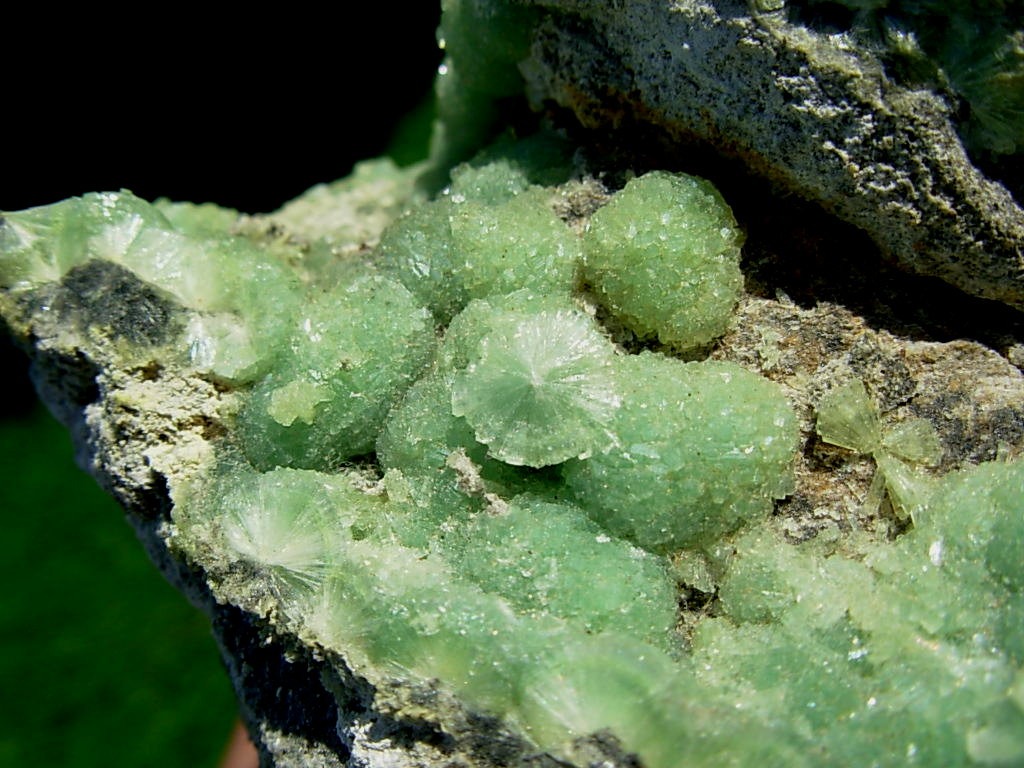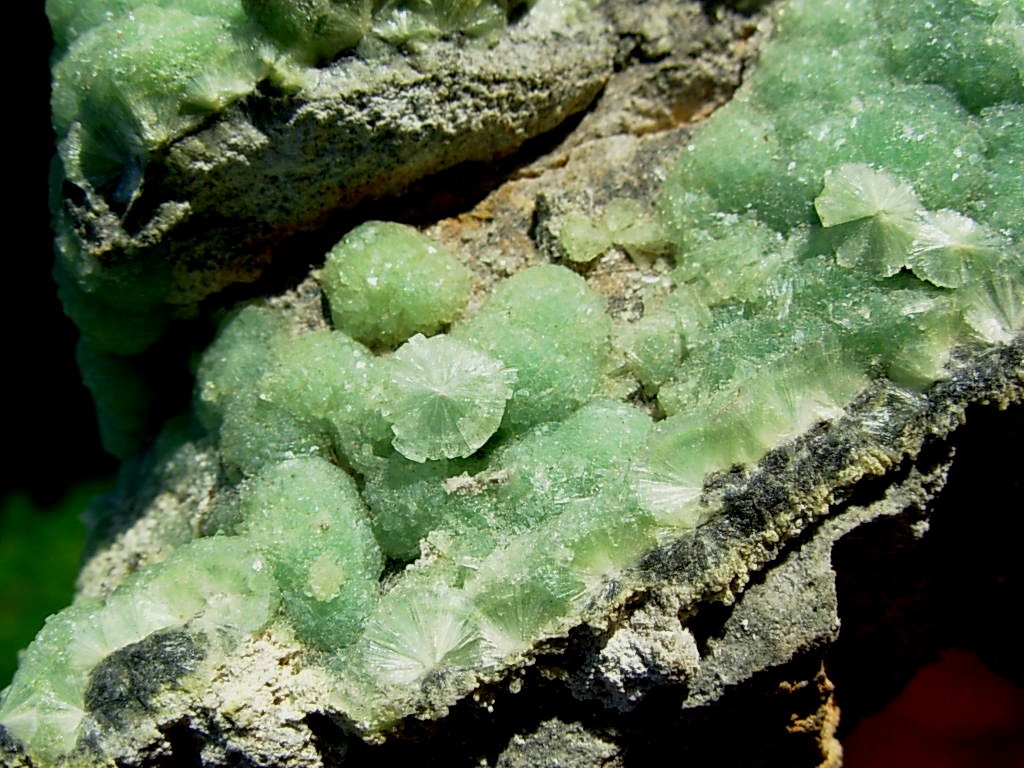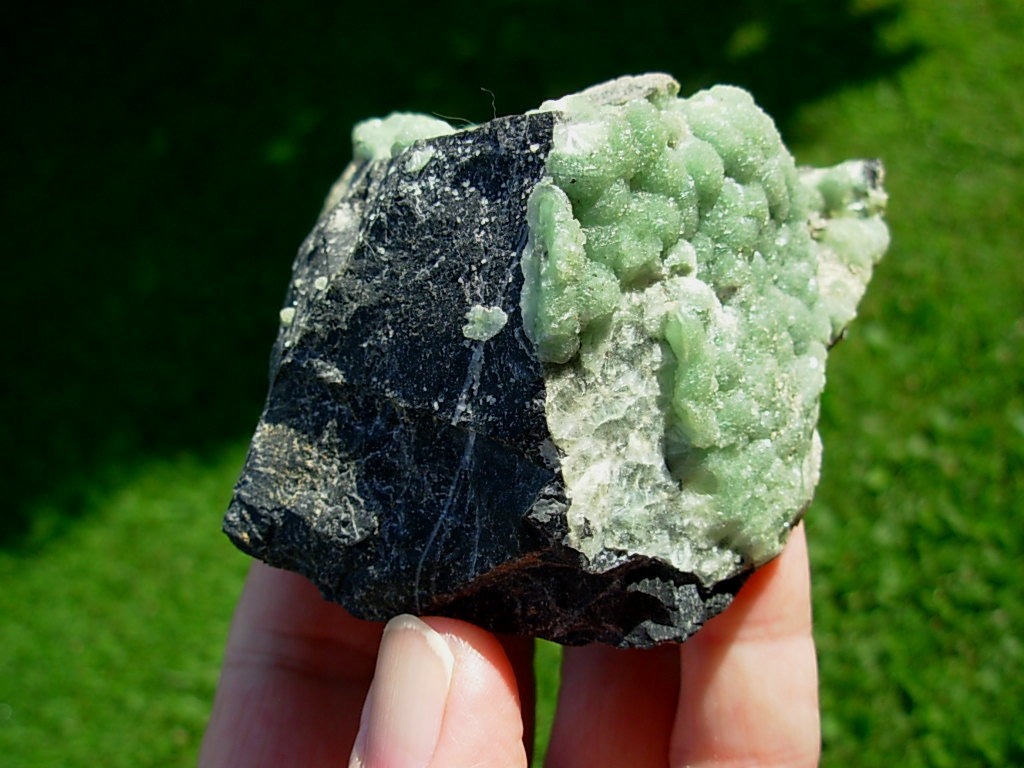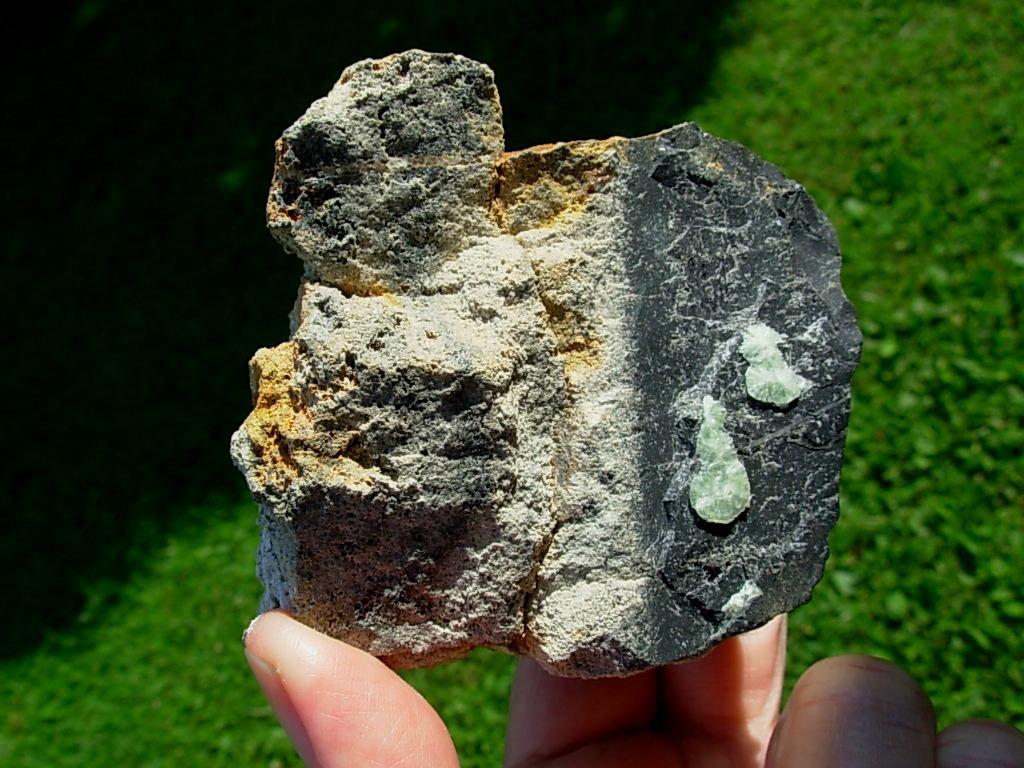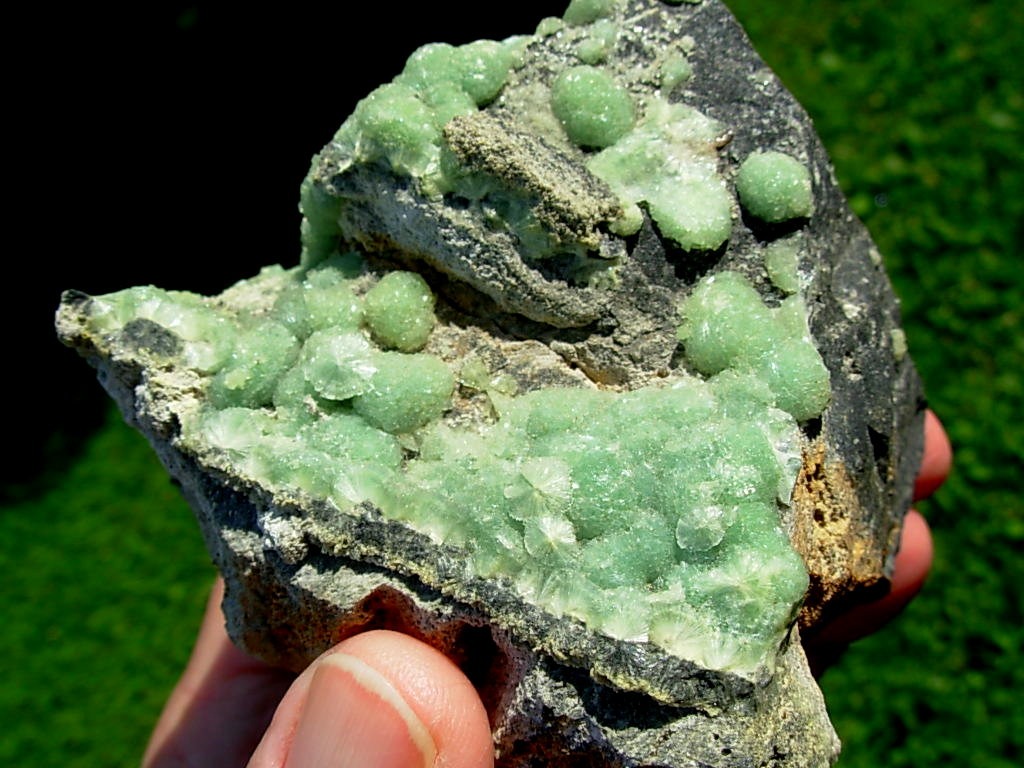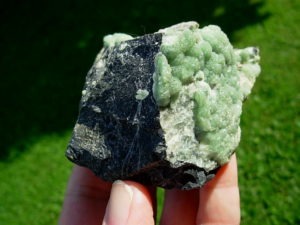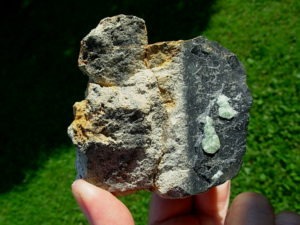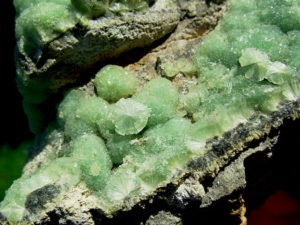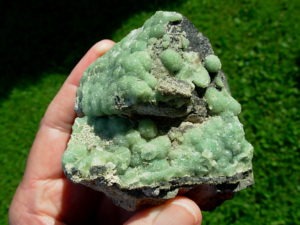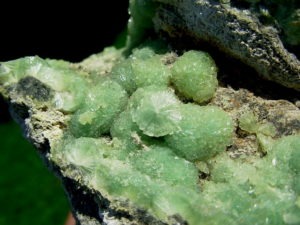Wavellite
Wavellite is a hydrous basic aluminum phosphate and is a mineral that demonstrates the classic radiating globule (botryoidal) crystal habit. It is agreed that Wavellite is the most referenced type mineral for this habit. The habit produces a unique effect when the globules are embedded in limestone and chert. If the rock is fractured and some of the globules are broken across the spheres, Wavellite exhibits a radial crystalline structure - the old timers call it "cats-eye". The radial cluster will then reflect light to produce a sparkling pinwheel effect. Although broken mineral specimens are generally not valued by collectors, the radial play of light can be captivating and makes very interesting specimens. The most collectible specimens are those with mostly, uncleaved clusters with a few cleaved globules to demonstrate the light play.
Wavellite was discovered by, and named after, an English physician named William Wavel. Wavellite is associated with Crandallite and Variscite as a secondary mineral in low grade metamorphic rocks and in phosphate deposits. It is rarely found in hydrothermal veins. Wavellite is readily dissolved by acids. (Caution: cleaning with Iron out or Oxalic Acids may destroy your specimen)
Wavellite is found in several locations but the most noteworthy locale is Mount Ida, Arkansas. Wavellite is perhaps the second best known collectible mineral in Arkansas, quartz being the first. Two Wavellite localities are well documented. The earliest collected site is near the community of Avant on the northeast end of Lake Ouachita in Garland County. It is called Dug Hill. It is called that because so many collectors have pot-holed the hillside looking for specimens. The site is on Ouachita National Forest land and the major holes were back-filled and replanted a few years ago. Personal collecting is generally allowed if you collect for yourself, not to trade or sell. This site produced some remarkable dark green spherical Wavellite aggregates on tan to gray sandy chert matrix.
The second locality is the now abandoned Montgomery County quarry, northwest of Mount Ida some 2.5 miles. This location is also known as Mauldin Mountain. When operational in the 1980s and early 1990s, spectacular apple-green to yellow-green Wavellite specimens, ranging up to cabinet size, were recovered by local collectors. Since the active quarry operation ended, very few specimens have been found. Persistent searching however may result in finding a few specimens. This site is also on Ouachita National Forest land. Collecting for personal specimens is generally tolerated, but if you ask permission to collect, you are likely to be turned down.
Item# WAV0814S85C4221
Old Stock Botryoidal Wavellite from Mount Ida, Arkansas

Superb Old Stock Globule Radiating Wavellite from Mount Ida, Arkansas
From our Personal Collection comes this rare Old Stock specimen of Wavellite from Mount Ida. We acquired this piece from the James Smedley collection from the old "Mineral Museum" in Follansbee, WV. We were lucky enough to get this specimen from his daughter Jeanne in 2010 while the Mineral Museum inventory was being liquidated. For those of you who are not familiar with Jim Smedley, he owned th Mineral Museum in Follansbee, West Virginia. He and his family traveled North America in his Studebaker trading and collecting specimens. He loved to share his experiences with fellow rockhounds, so he wrote articles describing his trips. The first article I am aware of was written in 1955 in the Rocks and Minerals Magazine whole number 248 September-October, 1955 page 472 titled "Our Rock Collecting Vacation" written by James Smedley. This piece has multiple globules on black and grey chert matrix. A few of the globules have been opened so we can see the radiating pinwheel effect. This specimen is a nice medium green best appreciated in sunlight or halogen light, either produce sparkling effects when the piece is viewed. Comes with Mineral Museum ID.
This specimen weighs 9.6 oz or 0.6 lbs (273g) and measures 3.3 x 2.9 x 2.1 inches (8.6 x 7.4 x 5.5 cm)

